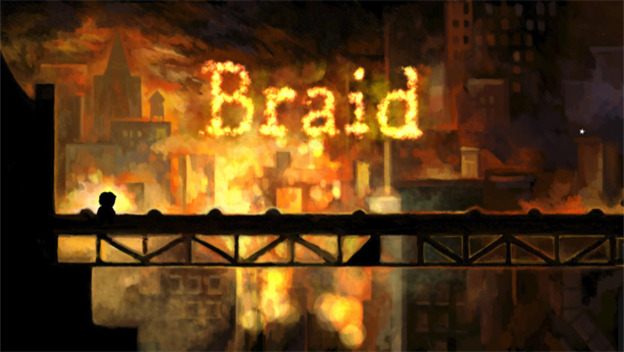If you could travel back in time ten years, you’d probably have more important things to do than ask people about the independent gaming scene. If you did, though, they’d probably cock their heads at you and ask, “What independent gaming scene?” The fact that this concept even exists—the idea of an independent developer—would be entirely foreign to them.
Well, unless they knew their history. Once upon a time, small, independent developers were all there were. Sometimes just individuals, slaving away at manipulating limited hardware to provide an experience (often using trickery to provide a more impressive one than should have been capable). Jordan Mechner grew from that pedigree, as did Richard Garriott and Chris Roberts. John Carmack? You bet. These are the names that defined PC gaming as it went from a neat trick one could do with a computer to a fledgling industry.
Somewhere along the line, though, that industry exploded. It became so large that it rivaled, and then surpassed, the film industry in revenue. Conversations began as to whether video games, an interactive medium, could serve as art. Questions were asked as to the effect of in-game violence (and later sexuality) on impressionable individuals. The industry grew ahead of the means to easily distribute it.
This has been covered in detail before— the decline of risk-taking and innovation in games as their costs began to increase along with distribution expenses and heightened expectations . And while we briefly touched on the resurgence of the independent game scene and the effect it had on the gaming landscape, we were, before, focused on how it had revived old genres. It’s done far more than bring back what had already been, though. It’s also introduced us to new concepts, and even entirely new genres, that we’d never have expected, much less thought to be popular.
The cornerstone of the independent scene, its greatest triumph, is probably Minecraft. Though it’s questionable as to whether Mojang remains “independent” at this point, given that they are now larger and more financially stable than most such developers, Minecraft certainly began life as the passion project of Markus “Notch” Persson. That it grew into something far larger is a testament to the success of it as an idea.
I haven’t played Minecraft. I don’t know whether this is from fear that I’ll lose too much time to it or because open-ended games tend to lose my interest before they’re worth my money, but I’ve still become intimately familiar with many of the game’s details. I know that it can be an entirely free-form block-building program or a quest for survival, scavenging for materials to turn into shelter and supplies so that one might fend off the hordes of beasties that haunt the dark. I know of the Creepers, whose protracted hiss provides one of the game’s most surprising elements. More than anything else, though, I know that people were willing to pay to be in its alpha and beta, with the promise that they’d have access to the final product when it launched.
Think about that. The game wasn’t even “complete” and gamers felt there was something there that was worth their time and money either then, down the road, or both. It has sold in the millions, its success staggering since it really doesn’t hit on any of the notes that games with mainstream appeal traditionally do. It isn’t a quick, simple shooter or a simulation of a popular sport. It’s also wholly original, rather than a sequel to a successful or nostalgic franchise.
Minecraft hasn’t been copied too much. There’s Terraria, which is two dimensions and more focused on the adventure than on the construction and survival elements, and there have been titles on the Xbox LIVE Indie Games service that have at least aped its style, if not the core of its gameplay. It doesn’t really have any direct competitors, though, whether in the independent or mainstream sector, but this is not entirely surprising.

Part of the independent gaming industry is that, as independent developers, most of them are working with limited resources, engaged in production because they have something cool and unique they want to get out there. Many indie titles are fairly abstract in concept, but even those that aren’t, or those that draw on classic genres, tend to twist those concepts in ways that haven’t been done before. Limbo and Braid are both platformers, but Limbo is entirely in silhouette and has extensive survival horror elements. Braid is more about solving platforming and time manipulation puzzles than reaction and navigation.
Sometimes independent games are inspiring because of what they lack. Amnesia: The Dark Descent, one of the most terrifying games I’ve ever tried to play, began as a self-published Steam title, before a larger publisher picked it up for retail distribution. It shies from genre mixing, providing a pure horror experience. More so than any other horror game that immediately comes to mind, actually. It in no way arms you against the dark forces you’ll encounter, forcing you to hide (often at the cost of your character’s sanity).
While this blurs the line, the most compelling trait of independent titles is the way in which they enrich the fabric of gaming. They fill in the blanks left by big-name titles, which tend to be shaped as much by publisher expectations as by developer fiat, providing experiences that don’t directly compete with the mainstream, but instead serve to complement it. This has become an important element of gaming culture, as indie games have become something of a test bed for new concepts, which larger developers can observe and, frankly, cannibalize. That said, the Steam store’s front page is populated not only by major releases, but a wealth of smaller, independent titles as well, while their Greenlight service is giving gamers a say in what will be published in the future.
Going forward, that means increased consumer agency and a greater breadth in the gaming landscape, introducing more variety. No complaints here.
 | By Shelby Reiches Lead Contributor Date: January 28, 2013 |
